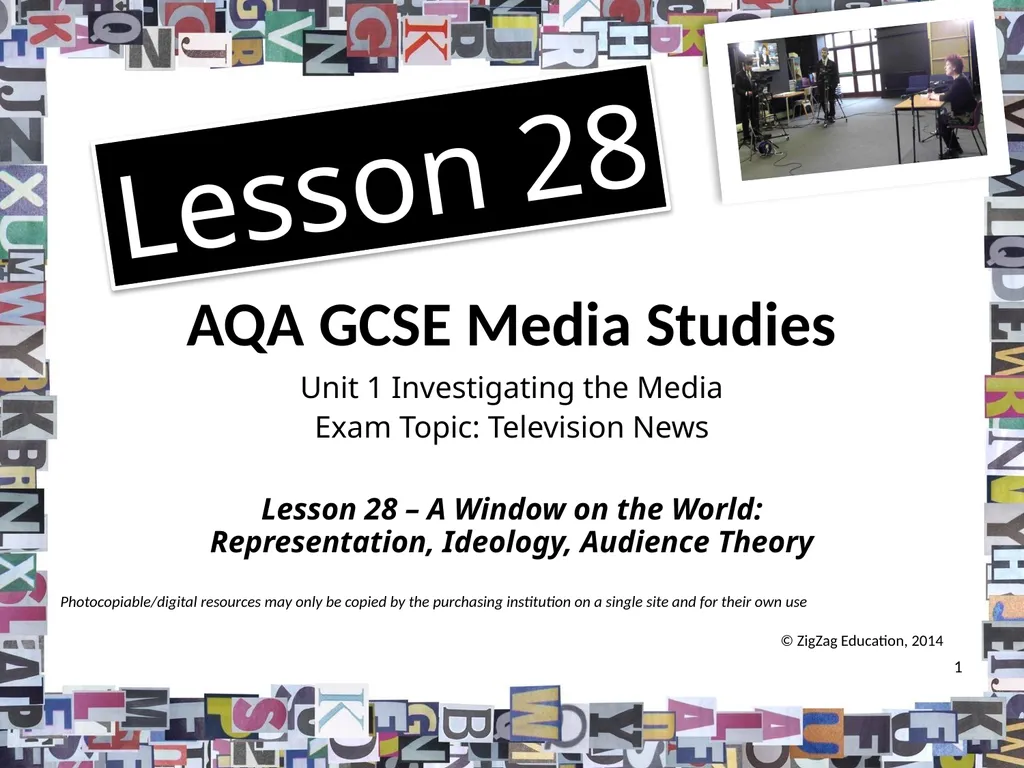
AQA GCSE Media Studies Unit 1 Investigating the
Author: briana-ranney | Published: 2025-08-04
Description: AQA GCSE Media Studies Unit 1 Investigating the Media Exam Topic: Television News Lesson 28 A Window on the World: Representation, Ideology, Audience Theory 1 Photocopiabledigital resources may only be copied by the purchasing
Download Presentation
Download the PPT/PDF: Download
Transcript:
Loading transcript